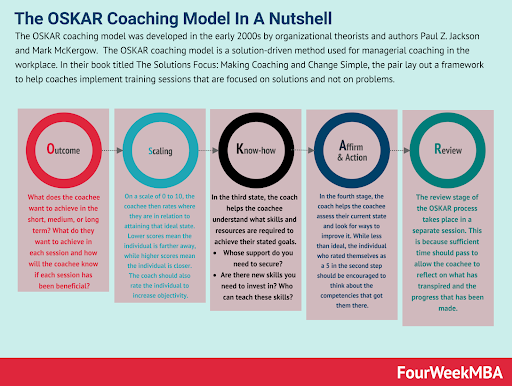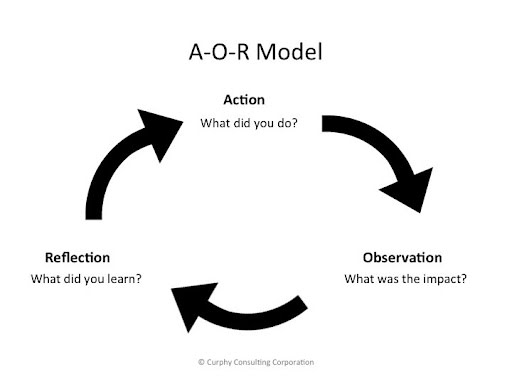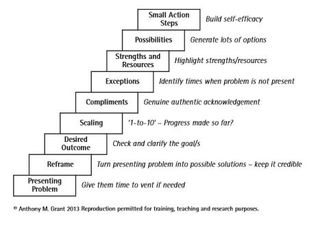Simple but effective models coaches swear by
![[object Object]](http://images.ctfassets.net/ly25iagmtxce/q49px13juekGs8O682VUG/babae0027eeed64aca2dce3fad9efba3/amy-hirschi-JaoVGh5aJ3E-unsplash.jpg)
Photo by Amy Hirschi on Unsplash
In its varying forms, coaching provides deep insights to millions of people worldwide. The coaching market is worth over $20 billion, with an unabated growth rate. Whether it’s a development team that aims to optimize efficiency, a salesman struggling to increase sales or the coach of a football club preparing players for his club's vision, each wishes to develop in some way.
In this article, we will share with you some of the top coaching models you can employ to get the best out of your clients. But before that, let's take care of the peripherals, shall we?
What does it mean to be a coach?
The Cambridge English Dictionary defines coaching as "the employment or activity of giving training for people or assisting them in preparing for something." However, this definition may sound restrictive because coaching entails much more than only teaching or preparing a coachee; rather, it encompasses walking beside them as they work to achieve their goals. Each coaching session should aim to help the client get closer to achieving their goals. Coaches should be able to use dialogue to help their clients achieve more clarity in goal-setting, build more successful approaches, and uncover hidden potential. A coach's role is not to do the work for the coachee but rather to work with them to develop more effective problem-solving strategies.
Coaching tools vs. coaching techniques
A coaching tool is a device employed by a coach to create specific outcomes; the tool is what you employ as a coach to achieve the overall objectives of the coaching session. For instance, graphite, pencils, brushes, and paint are the tools used in artistry. But for a coach, you utilize profiles, assessments, questions, reframing statements, question framework, and coaching model to drive home your service. On the flip side, coaching techniques encompass the technical skills, ability, aura, charm, or experiences you used to achieve the set-out objectives. Let's look at this contextually, shall we? Although questioning is an important tool every coach use during sessions, asking the right question is a technique.
Types of coaching models
Various coaching models will certainly be clamoring for your attention, but we'll keep it simple by looking at 4 of the most used coaching models. Please stay on track as we dig into these models.
The Oskar coaching model

The Oskar model is similar in framework to the solution-based coaching model. It was introduced by Mark McKergow and Paul Z. Jackson in 2002. This model is incredibly useful in helping clients get a sense of progress and measure their improvement throughout a coaching cycle. Now, why is it called Oscar? It is called OSKAR because its first letter represents a stage in the coaching process. So taking them one at a time, we start with the letter O.S.K.A.R.
Outcome
Simply refers to the result you are trying to deliver through this coaching program. What outcome is the person looking to achieve over the long term? Now, it may be a short-term coaching intervention, but generally speaking, this model seeks to help clients visualize what they hope to achieve at the end of the session.
Scale/Situation
The scale is unique because it focuses on putting some metrics against the gap between a coachee’s current status and where they want to be. You ask questions like, “what is the current situation, and how can you help the coachee to really get to grips with what this future is going to look like and then compare it to the current situation so that you can define the gap.” Now the current situation, of course, is to scale what is going on instead of their perception. So you need to make sure that these two are well understood and that there is a real gap that you need to bridge.
Know How
The third stage stands for the know-how and resources. Here the goal is to help the coachee identify the skills and resources necessary to actualize the set outcome or goals. As a coach adopting this model, it becomes your duty to help your clients go from a loose idea of what they might want to achieve to get a more specific goal.
Questions you can ask at this stage are “what knowledge do you need to help you achieve your goal? What other resources will you require to make this progress? What do you need to learn, and what support do you need? etc.”
Affirm/Action
This stage is about clients reflecting on what they have covered and thinking about the steps they want to take forward and commit to as they work towards identified outcomes. You might ask questions like, “what’s been useful for you here, what is it that stands out for you, and what are some of the actions you already think you will take? At this stage, you need to help coachees to build up some commitments and decide what would be most useful to their journey and what they will do to arrive at their ultimate destination.
Review
This is the final step in this coaching model, and this is something you would do in your next conversation. So it is about helping your clients reflect on their progress and celebrate their achievements or learning. You might ask questions like - what new things are you doing, what old things have you stopped doing, how do you feel about your progress, tell me about things you have done differently since we were last together, what progress have you made, etc. Ask exploratory questions during the review stage, and that would be the start of your next coaching conversation, and then you may go into OSKAR again.
The AOR coaching model

The AOR coaching technique promotes goal-setting through trial and error rather than focusing on fixed objectives. It enables quick turnarounds and is more of an "in the moment" coaching approach, to put it simply. It is therefore viewed more as a recurring monthly process. Because of this, managers want to utilize the coaching model as a tool for competition so that team members may assess how well they're doing against the rest of the group. In general, the concept works well for coaches who want to determine the pace with their teams since it gives them greater leeway to modify and evolve the process as needed. Let's examine the AOR coaching model in more detail:
Activities: These are the things an individual does, such as qualifying leads, cold emailing and calling, analyzing LinkedIn profiles of leads, etc.
Objectives: These are the predetermined goals for the activity; for instance, a sales coach would assign a sales rep the objective of qualifying leads or making a certain number of cold calls each day or each week.
Results: An evaluation of what has been accomplished in relation to the goals, such as increased sales profits, greater profit margins, faster delivery time, or decreased postponed payment rates.
The Solution-Focused coaching model

The solution-focused coaching methodology is built on tried-and-true methods that provide the tools you need to assist others in making transformative changes in their lives. The focus is on the client's personal and professional life and creating and implementing specific significant changes. It is a collaborative process between a coach and a client.
So what, then, are the core concepts of the Ericsson solution-focused coaching model? First, coaching is solution focused when it moves the client towards a positively framed desired future outcome. It does not dwell on past experiences; instead, it focuses on the new future and how the client shows up in that future.
The solution-focused approach has to do with how the mind functions since it helps people swiftly overcome the constraints and limits they set for themselves and realize their brilliance and leadership potential. It involves assisting people in seeing a way forward that will enable them to accomplish their goals. As soon as they consider the obstacles they will face, you can assist them in tapping into the internal and external resources that will enable them to overcome them and achieve their goals. This will help them maintain their long-term motivation and focus. As with all coaching models, you should always work with your clients to understand their rationale, why they need to achieve this goal, the implication if they don’t do this, and how much satisfaction it will bring them to achieve it.
You can't talk about coaching models without discussing the grow model. the grow model is one of the most popular and was established by John Whitmore and his colleagues in 1980. coaches fondly adopt this model for its clear and concise structure. Aside from that, the model is also popular for how it carries coachees through their challenges till they achieve their objectives. Here, the coach is not seen as a specialist in the clients' challenges but rather as a guide to help the client achieve their goals.
The GROW coaching model is essentially a way of helping coachees move forward by empowering them to find the answers for themselves. As you progress your coaching session, carry your clients through these four steps.
Goal
Starting with the goal, you need to understand what the client is talking about here, what the problem is, and what the coachee wants to achieve. You ask questions such as ‘tell me about the problem? What does the situation look like? When do you want the problem resolved, or what would you like to achieve? You’ve got to understand what you are talking about here, then move on to reality.
Reality
Here, you explore what is going on for the coachee. You ask questions such as ‘what are you experiencing, what is going on, tell me a bit more about the problem or tell me a bit more about what you want to achieve, well have you already tried and what obstacles are in your way?’. Most of the coaching conversations in the model will happen in reality as you explore with the coachee, and the solution often may pop out by itself, and the coachee will have a light-bulb moment of clarity.
Options
The options step in the model is essentially where the coach helps the coachee brainstorm what they could do to move forward. The coach asks questions such as ‘what are your options, what could you do to move just one step forward, and what would you do if you knew you couldn’t fail?
Will Do
Moving on, you have to finish with positive action, asking questions like ‘what are your next steps, what will you do, and by when. You will ask them to write it down so that they definitely are committing to taking action. Other questions include; ‘what support do you need and from whom?. You might even ask them how they will reward themselves when they take these actions.
Become a better coach with Workee
In the digital piloted business world, running a successful coaching business has gone beyond just people skills, coaching techniques, and models. You need more to stay afloat without getting burnt out. And this is why you need client management software like Workee. Workee is an all-in-one client management tool that allows you to scale your business and operate more productively. The workee software is designed to help you focus on the most important aspects of your coaching business while providing the tools you need to remain in your views purview. Workee can help you manage and expand your business in the following ways:
Workee helps you plan and schedule client meetings, allowing you to manage your time and serve clients better.
Workee helps you manage taxes, send invoices, and receive money directly in the most convenient way.
Workee makes communication easy with clients by providing video conferencing tools and the option to integrate your favorite tools.
Workee allows you to build a customized personal website for free. You can design a website that suits your business brand.
Conclusion
In their quest to find the ideal coaching style, most coaches eventually give up in frustration. However, the reality is that there is a wide variety of coaching models to choose from, and the success of any particular model depends heavily on the coach's expertise and the nature of the coaching niche. That being said, feel free to experiment with various models until you find the one that works best for your organization and target demographic. Once this is achieved, you can spend your resources on finetuning the model to better serve your clients.


